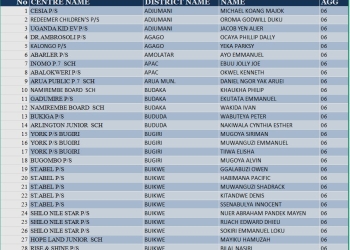
KUALA LUMPUR, Malaysia – Uganda is aggressively courting foreign investment, pointing to its stable currency and a surge in Foreign Direct Investment (FDI) as key pillars of an ambitious plan to grow its economy tenfold by 2040. The strategy was outlined by Finance Minister Matia Kasaija at the Pearl of Africa Trade Expo in Malaysia, where he sought to attract greater participation from Southeast Asian investors.
Kasaija told the expo that Uganda’s macroeconomic stability, characterized by a fully liberalized economy and a reliable currency, provides a strong foundation for investors. He stressed that the private sector’s significant role, accounting for approximately 80% of the nation’s Gross Domestic Product (GDP), is driving increased demand for a wide range of goods and services.
“We have affordable power tariffs for large industries, sustained peace and security – all key factors that boost export competitiveness,” Kasaija said.
A central element of Uganda’s pitch to international investors is the substantial growth in FDI. According to Kasaija, FDI inflows have nearly tripled in recent years, rising from $1.2 billion in 2020 to $1.6 billion in 2021, then jumping to $2.9 billion in 2022, and reaching $3.0 billion in 2023. This upward trend, he argued, demonstrates increasing confidence in Uganda’s economic prospects.
The Pearl of Africa Trade Expo, organized by the Ugandan High Commission in Malaysia, targets the Association of Southeast Asian Nations (ASEAN) market, which comprises ten countries: Brunei, Cambodia, Indonesia, Laos, Malaysia, Myanmar, the Philippines, Singapore, Thailand, and Vietnam. The Ugandan government views Malaysia as particularly well-positioned to assist in its efforts to shift from exporting primarily low-value-added goods to higher-value products.
Kasaija urged investors to consider opportunities in key sectors, including agro-industrialization, tourism development, mineral-based development (including oil and gas), science, technology, and innovation (including ICT), and the creative industries.
The International Monetary Fund (IMF) supports Uganda’s positive economic outlook. The IMF projects that Uganda will be among the world’s fastest-growing economies, with a real GDP growth rate of 7.5% expected in 2025. The Ugandan government’s stated goal is to fully monetize the economy, enhance self-sufficiency, and achieve structural transformation.
Uganda is a member of several key regional trade blocs, including the East African Community (EAC), the Common Market for East and Southern Africa (COMESA), and the African Continental Free Trade Area (AfCFTA). Kasaija emphasized that these memberships provide access to a vast free trade area with a combined population exceeding 1.5 billion people and a GDP of approximately $3.0 trillion. He also noted that the average Return on Investment (RoI) in Uganda continues to rise, exceeding the 14% level reached in 2022.
The Minister highlighted that Uganda has diversified its export base over the past 15 years, adding 31 new products, many of which are manufactured goods such as concentrated milk, hair products, butter, casein, and paper labels. “This momentum needs to be maintained,” Kasaija said.
Uganda’s Minister for Energy, Ruth Nankabirwa, also addressed the expo, stating that the country has only explored about 40% of its petroleum potential. She pointed to significant investment opportunities in electricity generation, transmission, and distribution, aimed at supplying the wider region. Nankabirwa added that Uganda has completed high-resolution airborne geophysical surveys and is conducting geological mapping and surveys to provide critical data for mineral, petroleum, and energy resource exploration and development.
“There exist investment opportunities in mineral exploration, mining, mineral processing and refining, manufacturing, and trade, with a number of incentives to investors. Uganda is ready,” Nankabirwa said, reiterating the government’s commitment to providing a conducive environment and the necessary infrastructure.
On the sidelines of the expo, the Ugandan delegation engaged in discussions with senior Malaysian government officials, led by Deputy Minister of Investment, Trade and Industry Liew Chin Tong, who expressed Malaysia’s interest in establishing bilateral partnerships in the agriculture sector. Uganda’s State Minister for Agriculture, Bright Rwamirama, highlighted the country’s substantial livestock resources, including 16.5 million cattle, 18.5 million goats and sheep, and 8 million pigs, describing them as “unrivalled areas of investment opportunities” within the sector.
The Pearl of Africa Trade Expo drew participation from various stakeholders, including the Minister of Agriculture and Food Security of Malaysia, Yang Berhormat Datuk Seri Haji Mohamad Bin Sabu.
















